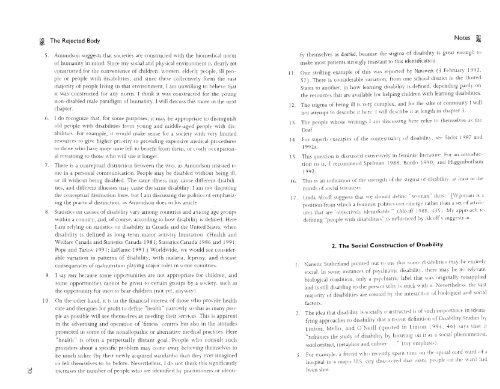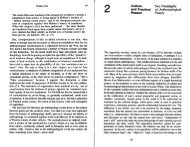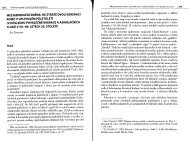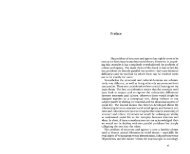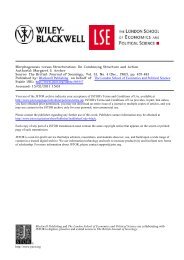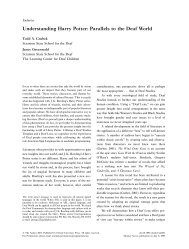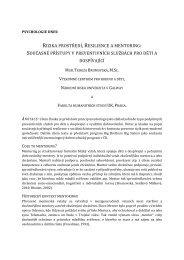The Social Construction of Disability - Moodle
The Social Construction of Disability - Moodle
The Social Construction of Disability - Moodle
You also want an ePaper? Increase the reach of your titles
YUMPU automatically turns print PDFs into web optimized ePapers that Google loves.
~<strong>The</strong> Rejected BodyNotes ~C35. Amundson suggests that societies are constructed with the biomedical norm<strong>of</strong> humanity in mind. Since my social and physical environment is clearly notconstructed for the convenience <strong>of</strong> children, women, elderly people, ill peopleor people with disabilities, and since these collectively form the vastmajority <strong>of</strong> people living in that environment, I am unWilling to believe thatit was constructed for any norm. I think it was constructed lor the youngnon-disabled male paradigm <strong>of</strong> humanity. I will discuss this more in the nextchapter.6. I do recognize that, for some purposes, it may be appropriate to disnnguishold people with disabilities from young and middle-aged people with disabiliucsFor example, it would make sense for a society with very limitedresources to give higher priority to providing expensive medical proceduresto those who have more time left to benefit from them, or cl)qly occupationalH'training to those who will use it longer7. <strong>The</strong>re is a conceptual distinction between the two, as Amundson insisted tome in a personal communication. People may be disabled without being Ill,or ill without being disabled. <strong>The</strong> same illness may cause diff(>rent disabilities,and different illnesses may cause the same disability I am not disputingthe conceptual distinction here, but I am discussing the politics <strong>of</strong> «mphasizingthe practical distinction, as Amundson does in his article.8. Statistics on causes <strong>of</strong> disability vary among countries and among age groupswithin a country, and, <strong>of</strong> course, according to how disabihty is defined. HereI am relying on statistics on disability in Canada and the Ullltec! States, whendisability is defined as long-term major activity limn arion (Health andWelfare Canada and Statistics Canada 1981; Statistics Canada 1986 and 1991;Pope and Tariov 1991; LaPlante 1991.) Worldwide, we would see considerablevariation III patterns <strong>of</strong> disability, with malaria, leprosy, and diseaseconsequences <strong>of</strong> malnutriti. III playing major roles in some countries.9. I say mol' because some opportunities are not appropriate for children, andsome opportunities cannot be gIven to certain gruups by a society, such asthe opportunity for men to bear children (not yet, anyway)10. On the other hand, it is in the rinancral interest <strong>of</strong> those who provide healthcue and therapies for pr<strong>of</strong>it to define "health" narrowly so that as many peopleas possible will see themselves as needing their services This is apparen tin the advertising and operation <strong>of</strong> 'fitness' centres but also in the attitudespromoted ill some <strong>of</strong> the nonallopathic or alternative medical practices. Here"health" is <strong>of</strong>ten a perpetual! y distant goal People who consult suchproviders about a specific problem may come away belieVing themselves tobe much sicker (by their newly acquired standards) than they ever imaginedor teh themselves to he before. Nevertheless, I do not think this Significantlyincreases the number <strong>of</strong> people who are identified hr pr.unnoners or identi-fy themselves as disanlcd, because the stigma <strong>of</strong> disability is great enough tomake most patients strongly resistant to this identification.] 1. One striking example <strong>of</strong> this was reported by Newsweek (3 February 1992,57). <strong>The</strong>re is considerable variation, from one school district in the UnitedStates to another, in how learning disability is defined, depending partly onthe resources that are available for helping children with learning dlsabilJtles12. <strong>The</strong> stigma <strong>of</strong> being ill is very complex, and for the sake <strong>of</strong> continuity 1 willnot attempt to describe it here. 1 will describe it at length in chapter 3.13 <strong>The</strong> people whose writings 1 am discllS'mg here refer to themselves as theDeaf14 For superb examples <strong>of</strong> rhc conrexiualn y ,,f disabiluy. see Sacks )987 and1992aI S. This question is discussed exteusivelv in feminist Iinrature. For an introductiontel it, I recommend Spelman 1988, Burdo 1990, and Higginbotham1992.16. This is an uidirat.on <strong>of</strong> the slreng111 <strong>of</strong>rh« stlgllla <strong>of</strong>disabilny. at Ica,t in t heminds <strong>of</strong> sucial SCll'nllsrs17. Linda Alc<strong>of</strong>f sugge.sls iha: we should di-rin« "wo.uan" thus. "[vVJoman is ,1position from wlnth a felllimst pubtics can emerge rather than a sci uf attributesthat are 'ohjeuively icknnhabk'" (Alcotf 1988. +3S.1 My approach todefining "people with disabilities" I' urtiu-nccd by ·\!L<strong>of</strong>f, ,ugge,ti( .n.2. <strong>The</strong> <strong>Social</strong> <strong>Construction</strong> <strong>of</strong> <strong>Disability</strong>1. Nanette Sutherland pointed out tl, ITW that SOl1K c1i,abi!itivs may be eIllire!)'social In some instances <strong>of</strong> psychic1ttlc disabilit y, there mal' be no relevantbiological condition, only a psychlatril label that \yas originally misappliedand is still disabling to the person whcJ is stuck wirh it. Ncvcrthelesx. the vastmajority uf disabilities are creared by the uueracuou (l hic)logical and socialfactors.2. <strong>The</strong> idea that disability is sucially U)llStructed is <strong>of</strong> such importance in idcuufyingapproaches to dIsability that a rC«Ont definition <strong>of</strong> Dlsability Studies b)Linton, Mello, and O'Neill (quoted in I.int o n 199+, .f6) says i h at it"relrames the study <strong>of</strong> disabilny by fucusmg Oil it as a social phenomenon.social construct. me1aphw and culture ." (my omph.isi-).3. For example, a friend wlu: rell'tlll)' spellt time on lit" spina! curel wan! III Jhospital in a major U.S. city disc


